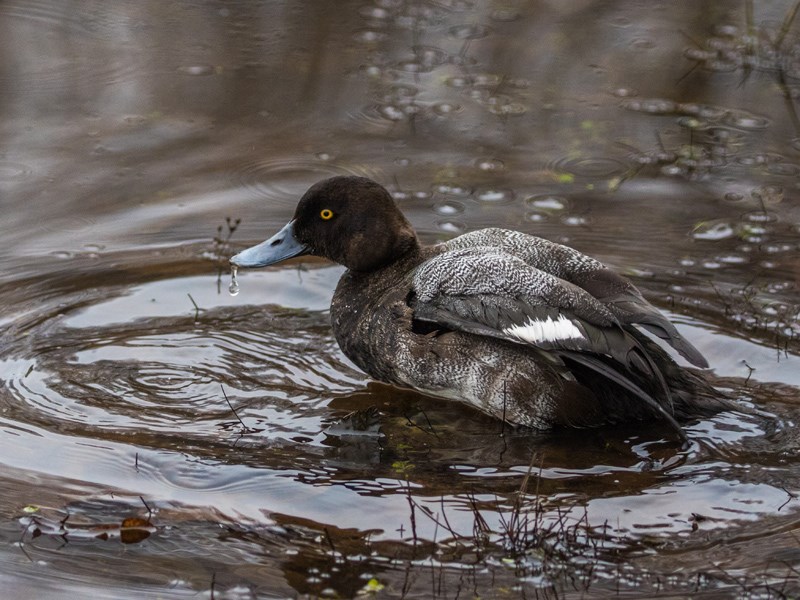DIFFERENT DUCKS: Having hit a window at the mill, a lovely grey lesser scaup was knocked out.
After returning to consciousness at Powell River Orphaned Wildlife Society but still not eating, it was force-fed by PROWLS president Merrilee Prior. This involved sliding a tube down the throat and carefully moving past the trachea, not exactly a simple task with a lively and confused duck.
Still refusing to eat on his own, he was placed outside in a safe little hut with a large basin of water, duck and goose pellets, grain, krill and mealworms. He paddled about, even sleeping while floating, but not eating.
Brought back inside to swim in the bathtub, he immediately spotted the food in the tub and happily scooped it up from the bottom. He would dive, swim along the bottom, feed, pause to digest, repeat: an essential protocol.
Finally nourished, he soon recovered and was released at Cranberry Lake, where he quickly swam over to join an American coot. They paddled contentedly together.
* * *
Totally the opposite was a green-winged teal, a small dabbling duck that chooses its food items while standing in puddles, flooded fields and wetland margins, tipping its body over to consume the same diet as the lesser scaup. A few hours after hatching, chicks can swim, walk, dive and forage but the mother will continue to brood them at night. They can take off straight from the water without running across the surface.
This small duck, heading for Cranberry Lake, was caught by a big cat on upper Alberni Street in a backyard.
During rehabilitation, it was content to sit on a raised wire floor within a kennel, not wanting either a basin or a bathtub. This variation in behaviour has to do with placement of its legs, which are set behind its centre of gravity. The further back the legs are on the body, the less agility ducks have on land.

